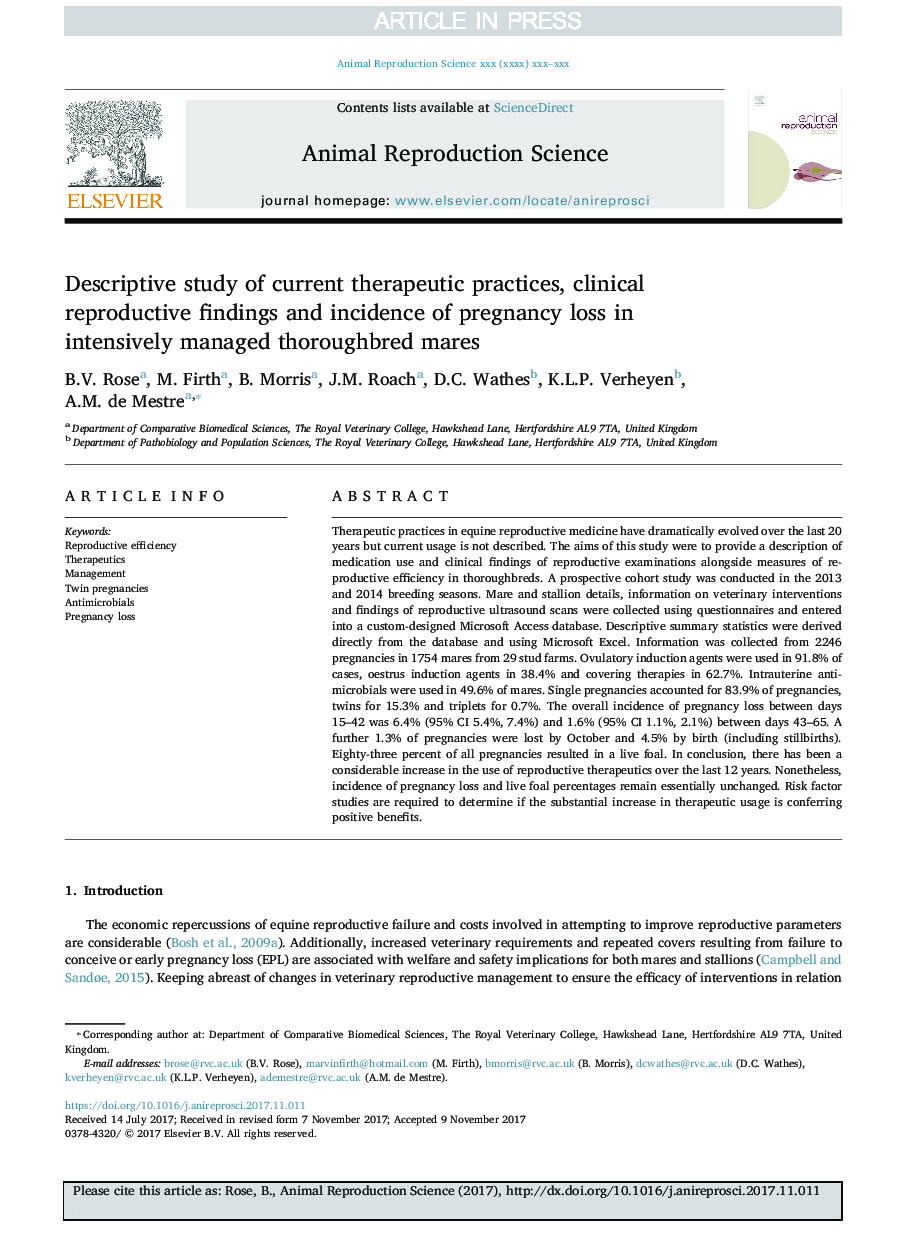| Article ID | Journal | Published Year | Pages | File Type |
|---|---|---|---|---|
| 8404077 | Animal Reproduction Science | 2018 | 11 Pages |
Abstract
Therapeutic practices in equine reproductive medicine have dramatically evolved over the last 20 years but current usage is not described. The aims of this study were to provide a description of medication use and clinical findings of reproductive examinations alongside measures of reproductive efficiency in thoroughbreds. A prospective cohort study was conducted in the 2013 and 2014 breeding seasons. Mare and stallion details, information on veterinary interventions and findings of reproductive ultrasound scans were collected using questionnaires and entered into a custom-designed Microsoft Access database. Descriptive summary statistics were derived directly from the database and using Microsoft Excel. Information was collected from 2246 pregnancies in 1754 mares from 29 stud farms. Ovulatory induction agents were used in 91.8% of cases, oestrus induction agents in 38.4% and covering therapies in 62.7%. Intrauterine antimicrobials were used in 49.6% of mares. Single pregnancies accounted for 83.9% of pregnancies, twins for 15.3% and triplets for 0.7%. The overall incidence of pregnancy loss between days 15-42 was 6.4% (95% CI 5.4%, 7.4%) and 1.6% (95% CI 1.1%, 2.1%) between days 43-65. A further 1.3% of pregnancies were lost by October and 4.5% by birth (including stillbirths). Eighty-three percent of all pregnancies resulted in a live foal. In conclusion, there has been a considerable increase in the use of reproductive therapeutics over the last 12 years. Nonetheless, incidence of pregnancy loss and live foal percentages remain essentially unchanged. Risk factor studies are required to determine if the substantial increase in therapeutic usage is conferring positive benefits.
Related Topics
Life Sciences
Agricultural and Biological Sciences
Animal Science and Zoology
Authors
B.V. Rose, M. Firth, B. Morris, J.M. Roach, D.C. Wathes, K.L.P. Verheyen, A.M. de Mestre,
